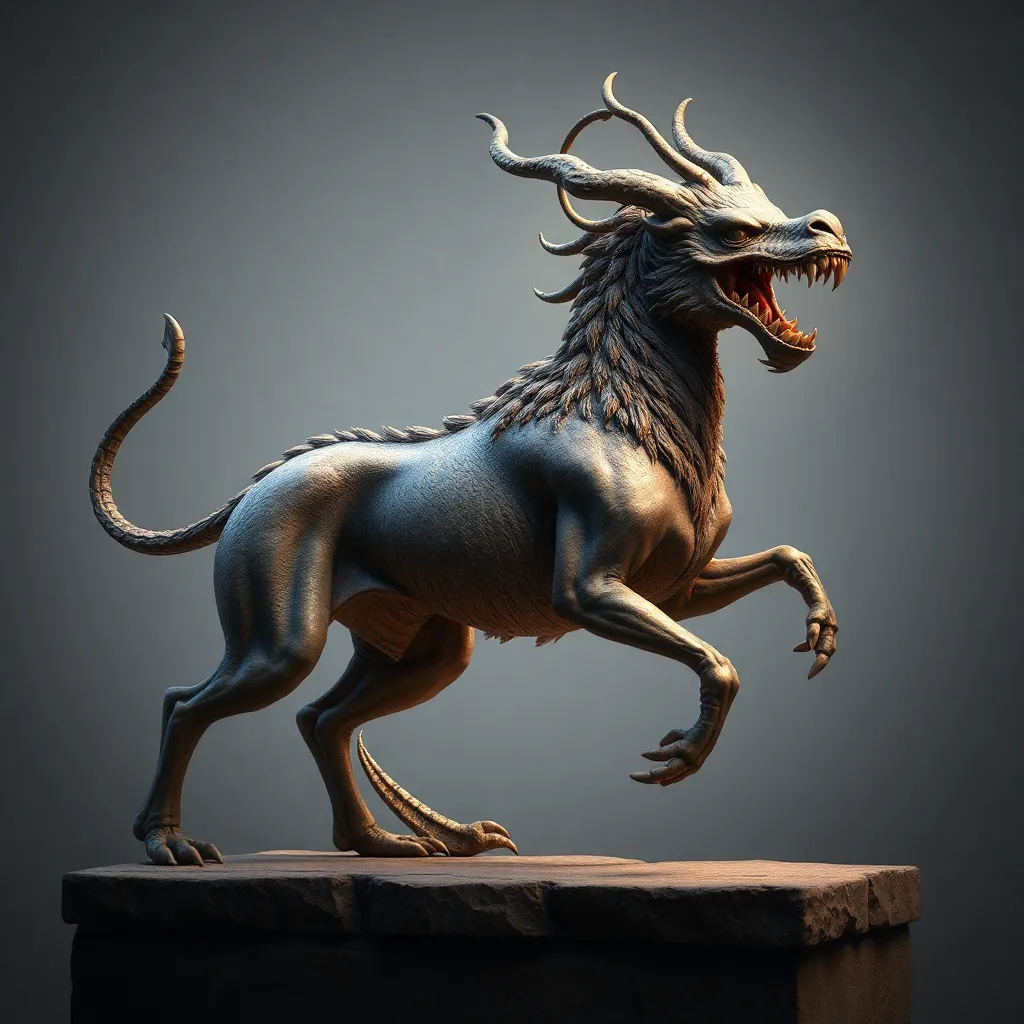The Role of Mythological Creatures in Greek Mythological Criticism
I. Introduction
Mythological creatures in Greek mythology are fantastical beings that populate the rich tapestry of ancient Greek stories and legends. These creatures, ranging from fearsome monsters to enchanting beings, play crucial roles in the narratives and themes of Greek myths. Understanding these entities is essential for grasping the broader implications of ancient texts and their significance in the cultural landscape of Greece.
Mythological criticism is a scholarly approach that examines the symbols, themes, and narratives within myths to uncover deeper meanings and insights about ancient civilizations. This article focuses on the pivotal role that mythological creatures play within this framework, exploring their significance in criticism and how they enhance our understanding of Greek mythology.
II. Historical Context of Greek Mythology
The origins of Greek mythology can be traced back to the oral traditions of ancient Greece, with roots extending to the Bronze Age. These myths were passed down through generations, evolving over time to reflect the changing values and beliefs of Greek society. Mythological creatures emerged as vital components of these narratives, serving various functions and embodying the cultural ethos of the time.
In ancient Greek culture, creatures such as the Cyclopes, Sirens, and Gorgons were not merely fictional beings; they represented significant aspects of human experience, morality, and the divine. Their stories often conveyed moral lessons, warnings, or reflections on the human condition, illustrating the complexities of life and the relationship between humanity and the divine.
The evolution of these mythological narratives over time highlights how creatures adapted to reflect societal changes, maintaining their relevance across generations.
III. Key Mythological Creatures and Their Symbolism
Several notable creatures in Greek mythology stand out due to their unique characteristics and the symbolic meanings attributed to them:
- Cyclopes: One-eyed giants representing brute strength and craftsmanship, often associated with creation and destruction.
- Sirens: Enchanting beings whose songs lure sailors to their doom, symbolizing temptation and the dangers of unrestrained desire.
- Minotaurs: Half-man, half-bull creatures embodying chaos and the primal instincts within humanity.
These creatures are more than mere plot devices; they carry profound symbolic meanings that resonate with the themes present in Greek myths. For instance, the Cyclopes can be seen as representations of the duality of creation and destruction, highlighting the potential for greatness and ruin inherent in human endeavors.
IV. Mythological Creatures as Agents of Change
Mythological creatures often serve as catalysts for character development and transformation in Greek myths. Their presence drives characters to confront their fears, desires, and moral dilemmas. For example:
- The encounter with the Sirens forces heroes like Odysseus to demonstrate self-control and resilience.
- The Minotaur represents the inner beast that heroes must conquer to achieve personal growth, as seen in the story of Theseus.
Additionally, these creatures play essential roles in shaping moral and ethical lessons within the narratives. They embody the consequences of unchecked ambition, desire, and hubris, encouraging audiences to reflect on their actions and choices.
Specific myths, such as the tale of Perseus and Medusa, illustrate how creatures can drive the narrative forward, with Perseus’s victory over the Gorgon symbolizing the triumph of intellect and bravery over chaos and fear.
V. Criticism and Interpretation of Mythological Creatures
Various critical approaches have emerged to analyze the role of mythological creatures in Greek literature. Two prominent frameworks include:
- Psychoanalytic Criticism: This approach explores the psychological dimensions of creatures, interpreting them as manifestations of human fears, desires, or subconscious conflicts.
- Structuralist Criticism: This perspective examines the underlying structures and patterns within myths, highlighting how creatures function within the larger narrative framework.
The impact of mythological creatures on literary criticism is profound, shaping how scholars interpret texts and their meanings. Contemporary critiques often reinterpret these beings, offering fresh perspectives that resonate with modern audiences and issues.
VI. Mythological Creatures in Art and Literature
The depiction of mythological creatures in art has evolved over centuries. In ancient Greece, pottery, sculpture, and frescoes often illustrated these beings, showcasing their importance in cultural expression. Today, artists and writers continue to draw inspiration from Greek mythology, bringing these creatures to life in new and exciting ways.
Influences of Greek mythology are evident in later literary works, from the epics of the Romans to modern fantasy literature. Creatures like the Minotaur and Sirens continue to appear in contemporary storytelling, serving as symbols of conflict, desire, and transformation.
VII. The Relevance of Mythological Creatures Today
The enduring legacy of Greek mythological creatures in popular culture is undeniable. From films and television shows to video games and novels, these beings resonate with modern audiences, often reflecting contemporary issues such as identity, morality, and the complexity of human emotions.
In literature and media today, mythological figures provide a lens through which we can examine current societal challenges, such as the struggle against inner demons or the quest for understanding in a chaotic world. They remind us that the themes embedded in these ancient stories are timeless and relevant, inviting reflection and dialogue.
VIII. Conclusion
Mythological creatures hold significant importance in Greek mythological criticism, serving as symbols, agents of change, and reflections of human experience. Their roles in ancient narratives enhance our understanding of mythology, allowing us to explore complex themes and moral lessons that continue to resonate today.
As we reflect on the lasting impact of these creatures, it becomes clear that their study fosters a deeper appreciation for the richness of Greek mythology and its relevance in contemporary society. The future of mythological studies promises further exploration of these beings, as scholars continue to uncover their meanings and significance in our ever-evolving cultural landscape.




